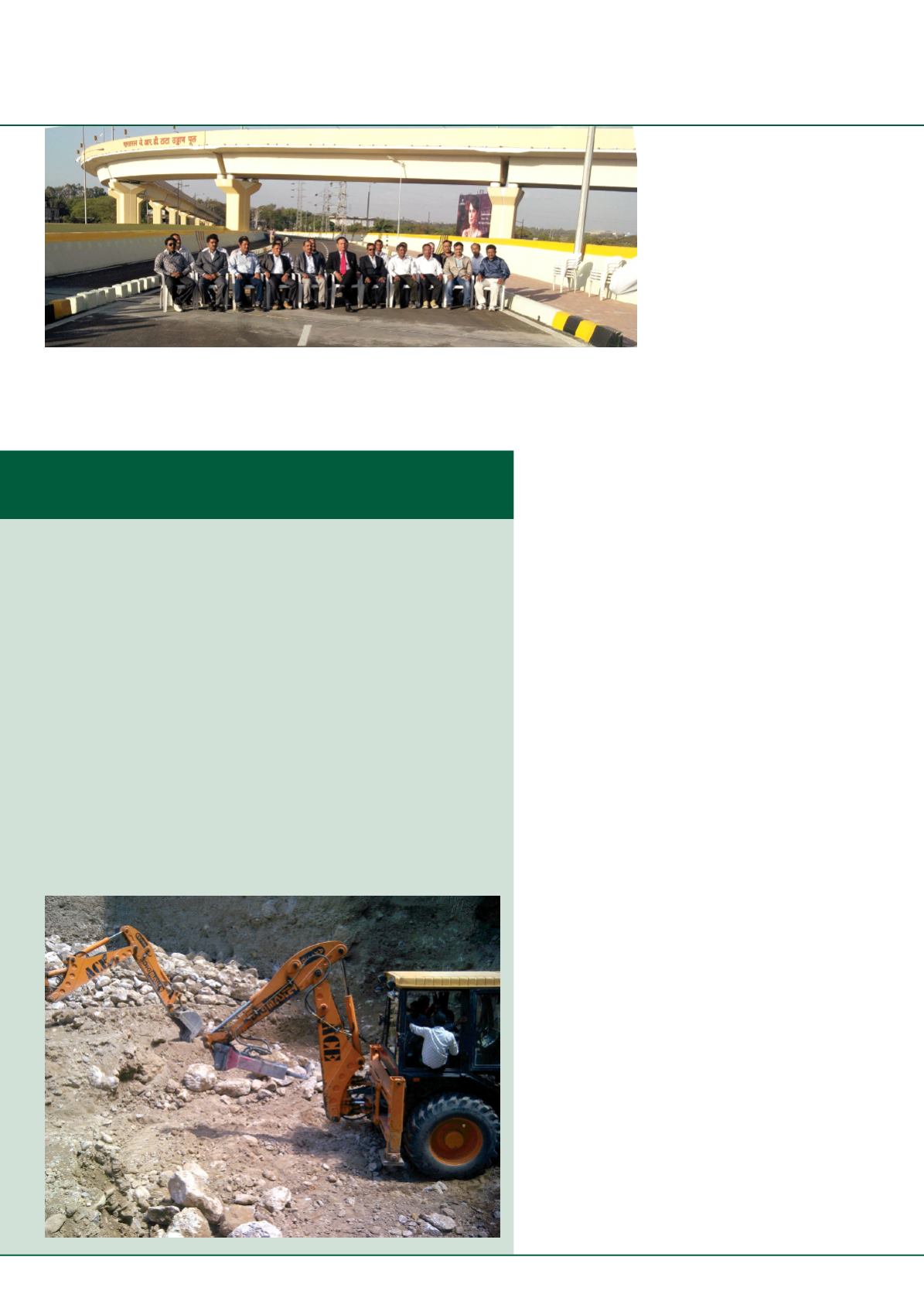
international
construction
april 2015
REGIONALREPORT
26
High-speed future?
A
t the start of 2014, contractorM/SRavi Kumar S/ODeshraj was commissioned by
one of India’s leading telecommunications providers to excavate trenches ahead of
the laying of telecoms cabling throughout the northern state of Himachal Pradesh.
Blastingwas ruled out because of the threat tomembers of the public, and large
earthmoving equipment wasn’t an option becausemany of the trenches run alongside
narrow roads. So the contractor opted for a backhoe loader. Thiswas equippedwith
an RX8 hydraulic breaker fromChicago Pneumatic to deal with any boulders that were
encountered.
Company owner Ravi Kumar said, “Previously, I had experienced issues relating to
breakdowns and low productivitywith the hydraulic breakers at my disposal. Therefore
my aspiration to find a powerful small breaker with higher reliability and productivity
becamemore intensewhenwewere allotted this time-sensitive project. My search ended
when Chicago Pneumatic providedmewith a visual demonstration of their small hydraulic
breaker range. I was particularly impressedwith the RX8 breaker, and immediately placed
an order so that I could deploy one as part of this project. After seeing the performance of
the RX8 I am very confident that wewill finish the jobwithin the stipulated time frame, and
as a result improve our profitability owing to less breakdowns and increased productivity.”
With a serviceweight of 370 kg and an impact rate between 530 and 1000 blows per
minute, the RX8 has few components and only twomoving parts, which is a big plus for
reliability. Among other features is a power booster function.
Trenchingworkhorse
Breaker used for extensive telecoms project
>
like high-speed rail betweenMumbai and
Ahmadabad.The feasibility study for this
is in an advanced stage and the report is
expectedmid-year.Quickandappropriate
action will be taken once the report is
available. Regarding the other high-speed
routes on the Diamond Quadrilateral,
studies are being commissioned.”
The 525 km Mumbai-Ahmadabad
route in the West and North of India
was identified early on as a potential first
segment of the Diamond Quadrilateral
and another forerunner could be the 1,000 km line between the
capitalDelhi in theNorth andPatna in theNorth-East.
However, the question of funding hangs over what will
undoubtedlybe an expensiveproject. According to aWorldBank
study, the cheapest high-speed rail has beenbuilt anywhere in the
world in recent years has been in China, where costs are said to
run at CNY 57 million (US$ 9.1 million) to CNY 73 million
(US$ 11.7 million) per km of double-track line. Even if India
could achieve these sorts of costs, the Diamond Quadrilateral
would come in at around US$ 60 billion before the cost of
stationswas added in.
It is going tobe a big issue, especially givenMr Prabhu’s budget
speech comment that central government finances are “over-
stretched.” The proposed solution to this is to open up Indian
Railways toprivate investment thoughPublicPrivatePartnerships
(PPPs), to open up equity in projects to State governments and
to allow the Indian Railways organisation to borrow directly on
themarkets.
Investment plan
The Indian Railways investment plan for 2015 – 2019 calls for
INR856,020 crore (US$136billion) in spending, ofwhich INR
65,000 crore (US$10.4billion) has been set aside for high-speed
rail and the proposedMumbai elevated rail corridor project.
IndianRailwayshas setupadedicatedunit, theHighSpeedRail
Corporation of India (HSRC) to handle this initiative. In fact
this was launched in 2013 under the previous government, with
the dual role of modernising the existing rail network as well as
developinghigh-speed rail.
But now HSRC seems more focussed on the high-speed
projects. As
iC
went topress, the deadline to receive tenders from
companies bidding to carry out feasibility studies for the next
three packages of the Diamond Quadrilateral was due to pass.
The threepackages areDelhi –Mumbai,Mumbai –Chennai and
Delhi – Kolkata, which is to say the fourth Chennai – Kolkata
link is not yet at this stage.
But anotherproject approaching the feasibility study stage is the
Delhi –Chandigarh–Amritstar line.
With the Diamond Quadrilateral at the feasibility stage, and
with less than a year havingpassed sinceMrModi came topower
to give the project genuine impetus, it is anyone’s guess what the
timelinewill be fromhere.
The only parallel in recent history is the NHDP of Mr
Vajpayee’s premiership, which went from the launch of the plan
in 1998 to its approval in 2000 and the start of construction in
2001. Substantial stretches of national highways started to reach
completion in the mid- to late-2000s, so essentially a ten-year
horizonbetween inception and completion.
But high-speed rail will be more demanding. It is certainly
more expensive infrastructure to build than highways, as well as
being more technically demanding. Tolerances are tighter and
VIPs at the opening of the Bharatratna JRD Tata double deck
flyover in Pune last year. Contractor B G Shirke Construction
Technology used Atals Copco pokers, vibrators andwalk-
behind rollers for concretingwork on the INR 104 crore
(US$ 16.5million) scheme.


